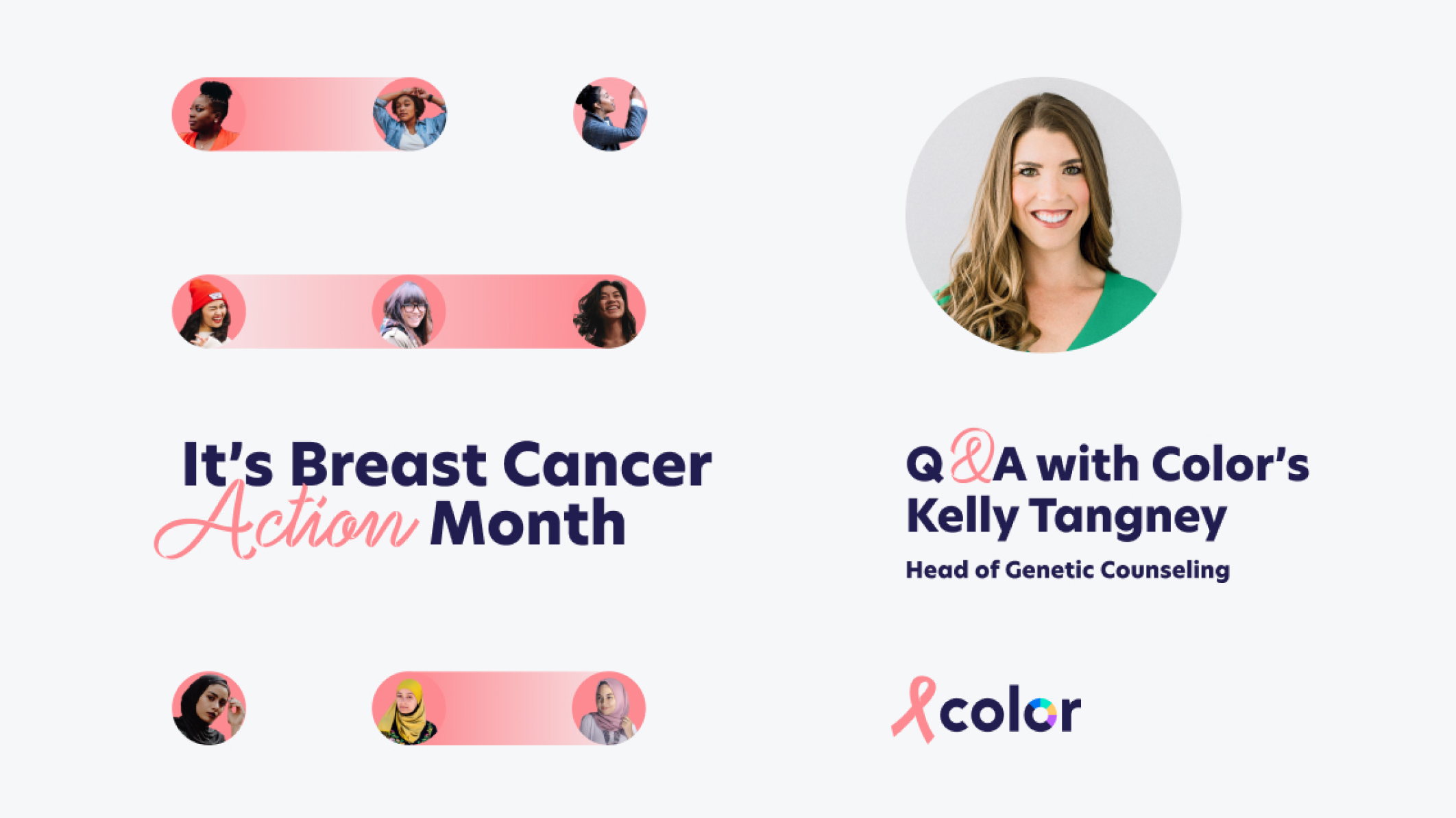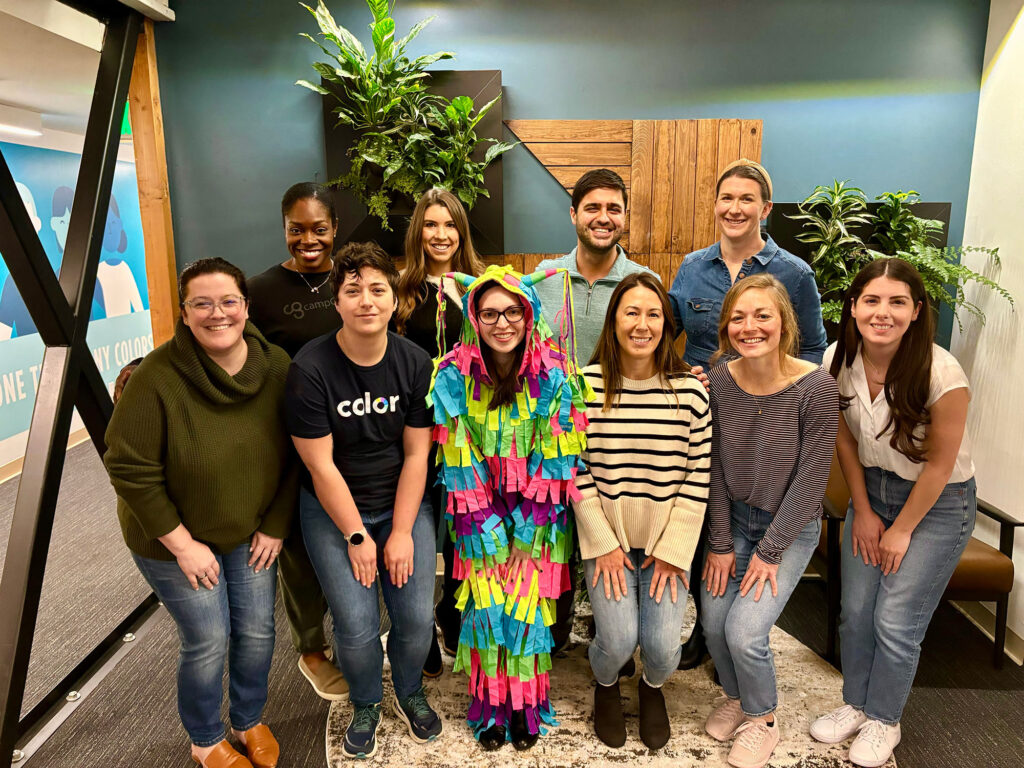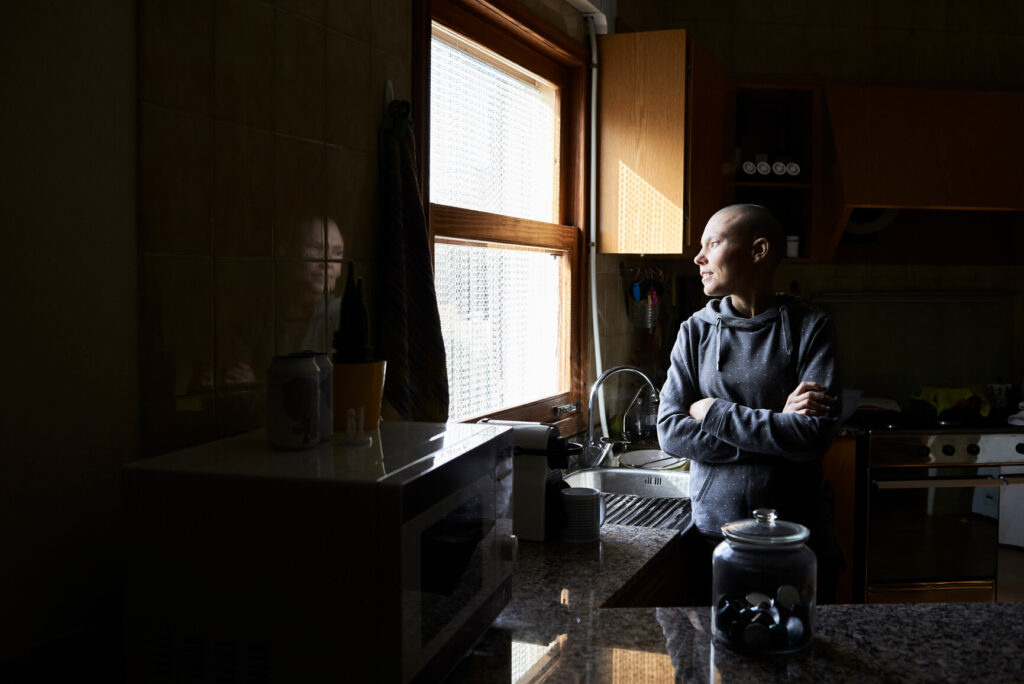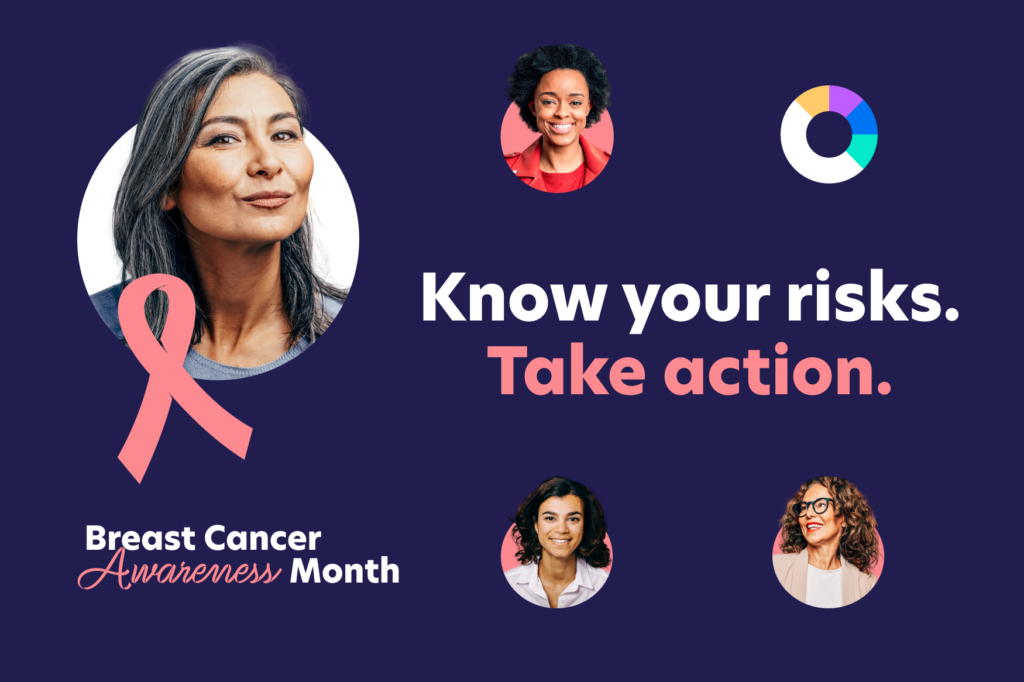News & Articles
Breast Cancer Action Month — What Actions Can You Take to Prevent Breast Cancer?
Color

Is now a good time?
One in eight women will develop breast cancer in their life. It’s the second most common cancer in women, following only skin cancer. Breast cancer can be hereditary, which means genetic testing can help reveal who has an increased risk.1
You might be aware of some or all of this information about breast cancer. But what actions can you take to help prevent it?
We asked Kelly Tangney — Head of Genetic Counseling Services at Color — to explain how taking a Color genetic test can provide you vital information that could help save your life. It’s all about creating an individualized plan of action.
How does the Color genetic test detect risk of breast cancer?
Color offers a comprehensive, clinical-grade, physician-ordered test that can tell you about your hereditary risk for breast and other common cancers. Taking this test can help in understanding your own risk, and what personalized next steps may be relevant.
For people with a hereditary risk of breast cancer, we help to engage their healthcare providers to prepare a personalized plan of action. The goal of the test is to identify people who are at higher risk so they can screen more often, start screenings at younger ages, or take measures to prevent breast cancer in the future.
Is it useful to take a Color genetic test if you’ve no discernible signs of breast cancer in your family?
Absolutely.
Personal and family health history do account for cancer risk, but it’s not everything. At Color, we’ve screened populations who have no family history of breast cancer. In those groups, we’ve identified many individuals and families with cancer gene mutations that would prompt actionable preventive steps.
In the past many people in the medical and scientific community assumed we should only screen individuals with a strong family history of cancer. However, there is a lot of evidence to show that people without family history — or those who don’t know their biological family history, or are adopted — could still come back with a positive finding. This could help them make decisions on their health care and inform other relatives.
Can you develop breast cancer without a genetic risk?
Yes. There’s a 13% chance that a woman will develop breast cancer over their life. However, only a small portion of them will have a gene mutation that also contributes to risk.
There are non-genetic factors, familial factors and possibly other genetic factors that are not as well defined that can all contribute to cancer risk. As we age our risk increases for cancer and other diseases. Things like diet, lifestyle, and environmental exposure can increase risk. There’s still a lot of research to be done and a lot of awareness to be brought about. Hopefully we’ll make advances in the future that will further personalize someone’s cancer risk and lead to better personalized health outcomes.
Besides getting tested, what are preventive measures women can take?
Women without other risk factors should be having annual mammograms at age 40. For women who are identified with a higher risk of breast cancer, we might recommend breast MRIs, and may recommend starting screening at an earlier age.
For example, it is recommended to start screening for breast cancer at age 25 for someone who has a BRCA1 or BRCA2 mutation. Additionally, there are medications and procedures that can help reduce risk for those who have been identified to have a higher hereditary risk.
How old should you be to get tested?
The age at which someone decides to know their own risk depends on many factors — most notably about whether they are ready to know and act upon such critical information. These things are important to think through prior to testing.
Some people as early as age 18 are ready to learn this information, especially if they have seen relatives undergo cancer treatment or already know of someone in the family who is at known risk. Some choose to wait until they are age 25 so that there could be action they could take right away depending on the result. Sometimes this information can be really helpful for reproductive decision making or family planning, as well.
Why is taking action sooner rather than later important? If you have a mutation, won’t you always have it?
Yes. If you have one of these hereditary cancer mutations in all the cells of your body, you’ve likely inherited it from one of your parents. It’s something you have your whole life. Your cancer risk will continue to increase as you get older whether you have a mutation or not, but knowing the information when you’re young and healthy can help determine longevity and health in future decades.
There are medically-backed guidelines that show starting screening at an early age for some gene mutations can work to detect earlier stage cancers — which have greater survival rates and increased treatment options that are less invasive.
Also finding out about these gene mutations can impact the awareness and risk-knowledge in other relatives. By taking the Color genetic test you may not only learn about your own risk, but you could be helping other close relatives understand their risk and take action.
What about men?
Regardless of biological sex, all people can have a hereditary risk for cancer — be it breast, prostate, or others. Men can have breast cancer gene changes that also may have implications for their prostate, melanoma, pancreatic or other cancer risk.
There’s a lot of press around female breast cancer and BRCA1 and BRCA2, but men can still carry gene changes that may impact their health. They may have a slightly increased risk for male breast cancer, which is rare in the general population, but is more relevant with certain genetic findings. All individuals are good candidates for this type of genetic testing, but it can also help to see other relatives who might be at risk who are daughters and sisters. When one person knows, it opens the possibility of others.
Does everyone in a family need to be tested?
Everyone over the age of 18 can decide for themselves if and when it’s right for them to get tested. Certainly we’ve seen instances where everyone in the family undergoes testing at the same time. While that’s an option, we typically recommend someone who’s had cancer in the past or the closest relative of that person to undergo testing first. That way the odds are increased that you’ll find the mutation so that we can know which side of your family it’s coming from.
Testing one or some relatives first to identify a genetic risk, then screening other close relatives and generations who are at high likelihoods to also have that known genetic risk is a process called cascade screening. Once we identify a mutation we’re quickly able to identify who would need testing.
How does genetic counseling work?
Genetic counseling can be beneficial at any point during the testing process. Before even getting tested, genetic counselors can work with clients to determine if it’s the right time to know this information and which tests may be best for an individual or family. We as genetic counselors want you to know how the information could impact you depending on the result.
We at Color have developed resources online that can help with this process. And we’re here at any point during the process to answer any questions you may have. (We’re on call from 7am-4pm PT Monday through Friday to help with any questions and concerns!)
A formal genetic counseling session is available after your results are ready. In that session, we can walk through every aspect of the result as well as integrate health history and lifestyle factors to help you understand your personalized risk. We’re here to help connect the dots with other healthcare providers of yours based on these genetic test results to get you the care that you may need.
Are Color tests affordable? What about the cost of genetic counseling?
Color has tried to make genetic testing as accessible and affordable as possible for the general population. Years ago — in order to take genetic testing — most people would have had to pay thousands of dollars out of pocket. Insurers rarely paid for the test unless the person had a personal or an identifiable family history of certain cancers. Color helped to reduce those barriers and allow genetic testing to be at an affordable rate where more people can undergo testing and know their risk.
Included in the price of Color testing is genetic counseling. It’s usually an added cost. Before and after getting genetic testing, you may have to see a local genetic counselor. We’ve included this in order for this relevant health information to be understandable as well as accessible. We want to make these results actionable and useful.
Why do you think it’s a good idea to get tested?
By taking this genetic testing, you may learn about additional cancer risks. You might also learn that you don’t have these mutations!
Some people say, “Well, I didn’t learn anything from this because I didn’t find any genetic risk.” But that’s not true. What you learned allowed you to expand your healthcare toolkit to better communicate with your providers. By adding this genetic testing, you’re able to utilize these results to help shape your personalized healthcare and cancer screening plan.
That’s the power of precision, preventive medicine.
There are currently 3.8 million survivors in the US2, some of whom were able to mitigate the spread of the disease with preventive action.
To order your Color genetic test kit, click here. All kits are specially priced in the month of October, making this the right time to take action on your health.
1,2American Cancer Society https://www.cancer.org/cancer/breast-cancer/about/how-common-is-breast-cancer.html



